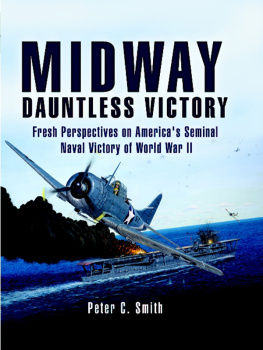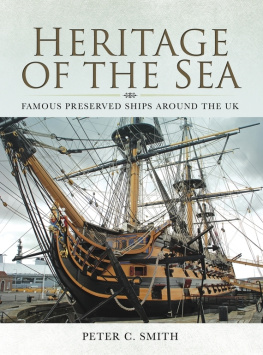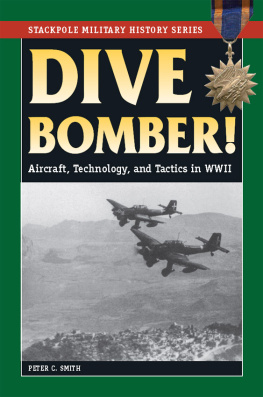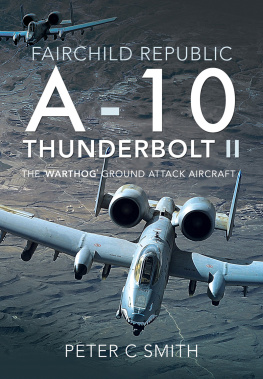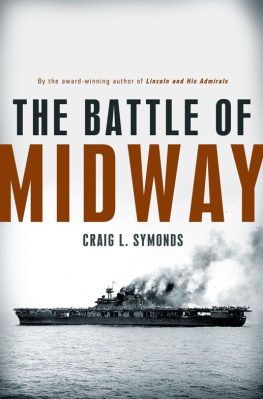By the same author:
NAVAL
Action Imminent
Arctic Victory
Battle of Midway
Battles of the Malta Striking Forces
Battleship Royal Sovereign
British Battle Cruisers
Cruisers in Action
Destroyer Action
Destroyer Leader
Eagles War
Fighting Flotilla
Hard Lying
Heritage of the Sea
Hit First, Hit Hard
H.M.S. Wild Swan
Hold the Narrow Sea
Into the Minefields
Pedestal:, the convoy that saved Malta
Royal Navy Ships Badges
Task Force 57
The Great Ships Pass
War in the Aegean
AVIATION
Close Air Support
Fairchild-Republic A10A Thunderbolt
North American T-6, SNJ, Harvard & Wirraway
Lockheed C-130 Hercules
Ship Strike
RAF Squadron Badges
T-6; the Harvard, Texan and Wirraway
The Sea Eagles
The Story of the Torpedo Bomber
MILITARY
Massacre at Tobruk
The Royal Marines: A Pictorial History
Per Mare, Per Terram
Victorias Victories
DIVE BOMBERS
Aichi D3A1/2 Val
Curtiss SB2C Helldiver
Dive Bomber!
Dive Bombers in Action
Douglas SBD Dauntless
Douglas AD Skyraider
Fist from the Sky
Impact; the dive-bomber pilots speak.
Into the Assault
Jungle Dive Bombers at War
Junkers Ju.87 Stuka
Luftwaffe Colours Stukas 1
Luftwaffe Colours Stukas 2
Petlyakov Pe-2 Peshka
Straight Down!
Skua; The Royal Navys Dive Bomber
Stuka at War
Stukas over the Mediterranean
Stukas over the Steppe
Stuka Spearhead
Stuka Squadron
Vengeance!
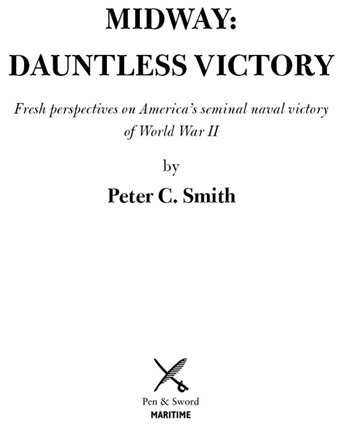
First published in Great Britain in 2007 by
Pen & Sword Maritime
an imprint of
Pen & Sword Books Ltd
47 Church Street
Barnsley
South Yorkshire
S70 2AS
Copyright Peter C. Smith 2007
ISBN 9781844155835
Digital Edition ISBN 9781848847057
The right of Peter C. Smith to be identified as Author of this Work has been asserted by him in accordance with the Copyright, Designs and Patents Act 1988.
A CIP catalogue record for this book is available from the British Library
All rights reserved. No part of this book may be reproduced or transmitted in any form or by any means, electronic or mechanical including photocopying, recording or by any information storage and retrieval system, without permission from the Publisher in writing.
Typeset in Bulmer by
Phoenix Typesetting, Auldgirth, Dumfriesshire
Printed and bound in England by
CPI UK
See all Peter C. Smiths books at www.dive-bombers.co.uk
Pen & Sword Books Ltd incorporates the Imprints of Pen & Sword Aviation, Pen &
Sword Maritime, Pen & Sword Military, Wharncliffe Local History, Pen & Sword
Select, Pen & Sword Military Classics and Leo Cooper.
For a complete list of Pen & Sword titles please contact
PEN & SWORD BOOKS LIMITED
47 Church Street, Barnsley, South Yorkshire, S70 2AS, England
E-mail:
Website: www.pen-and-sword.co.uk
Depend on it, he who pretends to give a general account of a great battle from his own observation deceives you believe him not. He can see no farther (that is, if he be personally engaged in it) than the length of his nose.
Captain Alexander Cavalie Mercer, Royal Horse Artillery. (17831868)
(Journal of the Waterloo Campaign, 1870)
To Pat
for fifty joyful years
for two wonderful children
for patience and tolerance
for following my restless footsteps around the globe
this book is for you.
Contents
Illustrations
Maps
Tables
Diagrams
Authors Note
The Battle of Midway has proved a fascinating study of the unpredictability of war and the frailty of the exercise of control over a battlefield. Rarely has the old adage that no plan survives first contact with the enemy been more vividly demonstrated than at Midway. All battles tend to lose cohesion once joined, but Midway was a confusing battle in new ways. It was a three-dimensional battle, fought on, above and below the sea; as if that was not enough it was fought across the International Date Line, with American forces using one time zone and Japanese using another. Not only were battles fought between opponents but there was conflict and tension between commanders and officers on both sides; once initiated by the admirals the battle was actually fought and won by men of relatively junior ranks, young ensigns, lieutenant (jg) and Lieutenants as well as NCOs. There was courage aplenty, the battle was filled with self-sacrifice and truly noble effort; there were tragedies galore, horrendous sacrifices by men on both sides of the conflict; high drama also, with unbelievable twists of fate that would not be contemplated for a work of fiction, so bizarre were they. There were ugly scenes among the heroism, as in any war; men were tortured and men were murdered, men were abandoned and left to die; there were tragic, lonely and unrecorded deaths as aircraft ran out of fuel in the middle of the largest ocean in the world; but the overwhelming images are those of courage and incredible fortitude. Midway has all these, and more; not surprisingly many aspects of these dramas have reverberated down the decades since it was fought, and continue to do so.
One thing about Midway is incontestable: its outcome the winner is not in doubt! But who achieved that result, and why and how it was achieved continue to be the subject of hot debate. This book attempts to take a neutral and unbiased look at the battle. I have many friends in both America and Japan, and love both countries and peoples. But, being British, I can sometimes look objectively at events or incidents that are still highly charged and subject to intense partisan feelings in both countries. So it is with a detached eye, and a different viewpoint, that many facets of the battle are analysed here, for good or bad. And not just the battle itself; I have tried to place the battle in perspective, to give it a place in the overall scheme of things. Did Midway affect Normandy, and therefore post-war European history, as some would have it? What of the new myth of the so-called Operation Orient, a product of revisionist and television documentary makers suddenly given undeserved prominence? Who really gained and lost by the outcome of Midway?
Three things I have sought to bring out three simple basic truths that have tended to be underplayed or even deliberately and disgracefully ignored by the Western media since 1942. Two of them are the pivotal role of pre-battle intelligence (COMINT) and the crucial and decisive role of the dive-bombers in determining the outcome of the battle when all other methods had failed. This book tries to correct this sixty-year-old travesty of justice and in doing so, expose the third the inaccuracy of film and TV documentaries, something that also still continues. So Rochefort, McClusky and Best get their just prominence and due in these pages, while, in terms of hardware, it is the SBD which emerges the true heroine of the story, not the TBD, nor the F4F and certainly not, as was widely proclaimed at the time, the B-17. Certain beliefs sincerely held by veterans are included, not necessarily because I subscribe to them or believe them to be true, but because every veteran has the right to have their own particular memory on record, whether misguided or not.
It is now fashionable to follow the civilian Japanese practice of placing the family name first and the given name second in books on the Imperial Japanese Navy (IJN). This is certainly accurate from the general Japanese perspective and courteous as well. Despite my favourable views, however, I have decided, in general, not to adopt this policy. Firstly, when formally listing the various
Next page
